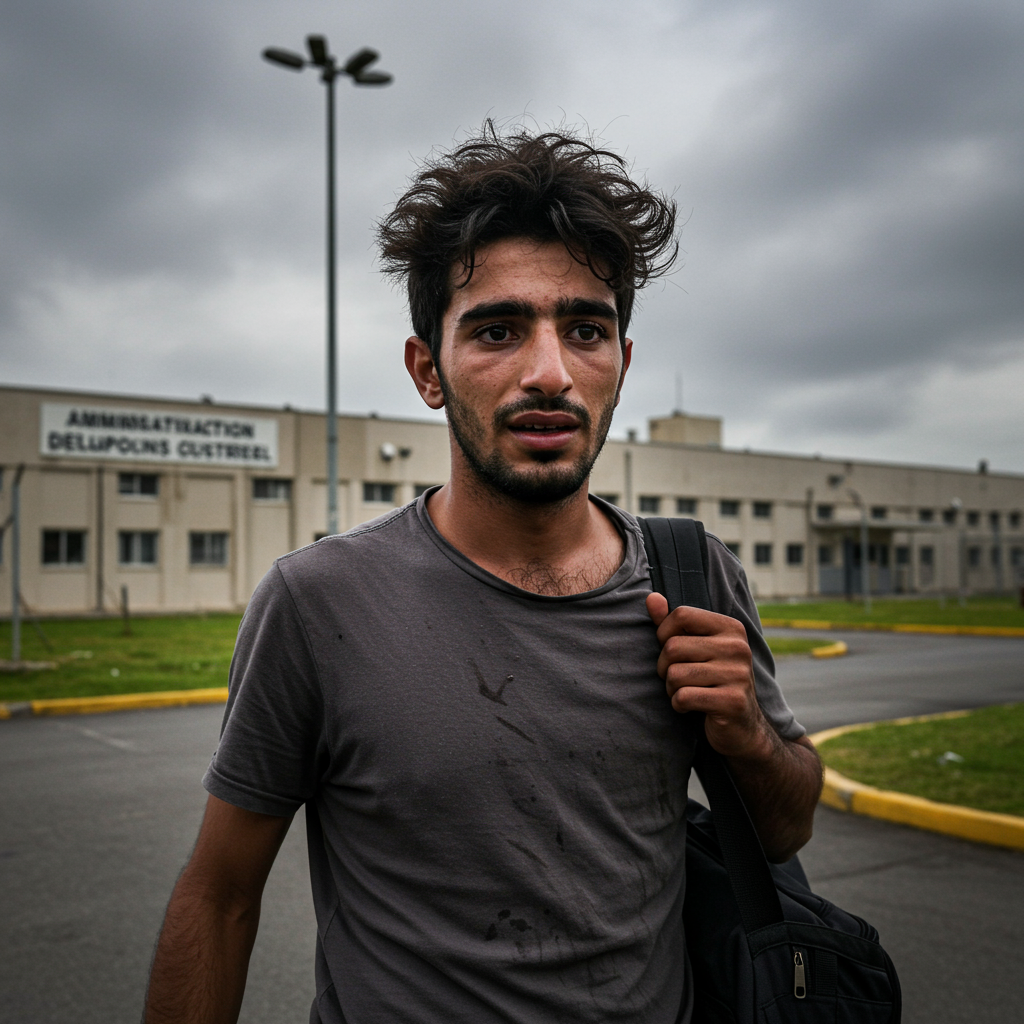United States President Donald Trump and israeli Prime Minister Benjamin netanyahu recently engaged in a second meeting within just 24 hours at the White House. These unscheduled, high-level talks focused intently on the ongoing conflict in Gaza and the complex efforts to secure a potential ceasefire agreement. Occurring amidst escalating tensions and a deepening humanitarian crisis, these discussions underscore the critical diplomatic push to find a path towards de-escalation.
Inside the Unscheduled White House Meeting
A Second Day of Intense Diplomacy
The Tuesday evening meeting between President Trump and Prime Minister Netanyahu was the latest in a series of engagements, following a lengthy dinner session the night before. It marked Netanyahu’s third visit to the US since Trump’s second term began. Unlike typical diplomatic exchanges, the Tuesday talks were notably private, lasting just over an hour according to some reports, or up to two hours by others, with no media access permitted. This lack of transparency immediately fueled speculation about the nature and progress of the conversation.
President Trump himself indicated the singular focus of their discussion before the meeting commenced. He told reporters he would be speaking with Netanyahu “almost exclusively” about Gaza. Trump described the situation there as a “tragedy.” He conveyed a shared desire with Netanyahu to see the conflict resolved quickly.
Decoding the Silence: Optimism vs. Obstacles
The absence of a formal readout from the closed-door meeting led to significant analysis and interpretation. Reporting from Washington, DC, suggested that the intensely private nature of the talks might signal challenges. The relative brevity, compared to the previous evening’s dinner, was also cited as a potential indicator. Some analysts posited that the lack of clarity could point to a “stumbling block,” possibly clouding the otherwise optimistic public positions adopted by the two leaders in the preceding hours.
However, a contrasting view emerged from President Trump’s special envoy to the Middle East, Steve Witkoff. Speaking shortly before the Tuesday meeting, Witkoff expressed considerable optimism. He suggested that Israel and Hamas were nearing a ceasefire agreement. According to Witkoff, the number of outstanding issues preventing a deal had narrowed dramatically from four to just one. He voiced hope that an agreement could be finalized by the end of the week. Witkoff even provided specific potential terms: a 60-day ceasefire, the release of 10 living Israeli hostages, and the return of the bodies of 9 (or potentially 18, according to other sources) deceased hostages held by Hamas.
Sticking Points: The Battle Over Gaza’s Future
Despite the envoy’s hopeful assessment, other voices painted a more complex picture of the Gaza ceasefire negotiations. The path to a deal remains fraught with significant challenges.
Netanyahu’s Unwavering Military Objectives
Prime Minister Netanyahu offered a more cautious perspective following his meeting with House Speaker Mike Johnson on Tuesday. While acknowledging that negotiators were “certainly working” on a ceasefire, he firmly stated that Israel’s military campaign in Gaza was not yet complete. Netanyahu reiterated Israel’s primary objectives: finishing the job in Gaza, securing the release of all remaining Israeli hostages, and eliminating Hamas’s military and governmental capabilities. This public stance highlighted the gap between the potential for a temporary pause and Israel’s stated long-term goals, suggesting that a permanent end to hostilities, as demanded by Hamas, remained out of reach. Sources from Israeli media indicated Netanyahu was facing considerable pressure from President Trump to reach an agreement. Yet, no immediate breakthrough materialized from the White House discussions.
The Critical Issue: Redeployment and Rafah control
Reports filtering out from the various sources pointed to the critical unresolved issue in the indirect talks: the location of Israeli army redeployment within Gaza. Specifically, the fate and control of Rafah in southern Gaza appear central to the deadlock. One key point of contention is Israel’s plan to maintain control over a narrow strip known as the Morag Corridor near the Egyptian border. Netanyahu reportedly sees this as essential for preventing future weapons smuggling into Gaza.
This strategic control point is linked to broader Israeli plans for the enclave’s future. According to reports citing Israeli Defence Minister Israel Katz, Israel intends to establish a “humanitarian city” or “tent city” in Rafah. This facility would purportedly house displaced Palestinian civilians separately from potential Hamas fighters. However, critics argue this plan has a different underlying motive related to post-conflict control.
Allegations of Controversial Post-War Plans
The proposed Israeli plans for Rafah and the discussion around potential population movement have drawn significant criticism and raised alarms among international observers.
The “Tent City” Proposal and Forcible Transfer Concerns
The plan reportedly involves concentrating Gaza’s population, estimated at over 2.1 million people, into this tent city in Rafah. Israeli forces would control who enters and exits, effectively isolating the population. More troublingly, Israeli media reports linked this plan to an alleged intention to eventually push the population out of Gaza entirely. This outcome, critics claim, aligns with a “Trump plan” of depopulating Gaza and taking control of the territory.
Analysts like Annelle Sheline of the Quincy Institute have described the proposed tent cities as “concentration camps.” She and others argue that implementing such a plan could constitute a “horrific crime against humanity.” Facilitating the transfer of a population out of their land, especially after a conflict causing such devastation, carries immense legal and ethical weight. Sheline also suggested that the United States could be implicated if it supports or fails to oppose such actions. President Trump, when previously asked about supporting the involuntary transfer of Palestinians out of Gaza, reportedly deferred the question to Netanyahu, indicating a reluctance to intervene against Israeli plans. This stance has fueled concerns among critics that the US administration might not actively challenge proposals deemed potentially illegal or harmful.
Broader Context: The US-Israel Alliance and Regional Tensions
The intense focus on the Gaza ceasefire during the Trump-Netanyahu meetings occurs within the framework of a deeply intertwined US-Israel relationship and a volatile regional landscape.
Deepening Ties Amidst Conflict
The political and personal relationship between Donald Trump and Benjamin Netanyahu has been notably close. Trump has openly supported Netanyahu, even publicly criticizing prosecutors handling a corruption trial against the Israeli leader. Netanyahu, in turn, has praised Trump, highlighting what he describes as unprecedented coordination between the two countries. Netanyahu even nominated Trump for the Nobel Peace Prize. This strong alliance forms the backdrop for the current high-stakes diplomatic efforts regarding Gaza.
Geopolitical Backdrop: Iran and Houthi Strikes
Beyond Gaza, the leaders also discussed broader regional security concerns. According to reports, their first meeting since recent US and Israeli military actions against Iranian nuclear capabilities underscored a shared focus on countering Tehran. While a ceasefire between Israel and Iran has reportedly held since a recent 12-day conflict, achieving a similar pause with Hamas has proven significantly more challenging. Recent Israeli strikes on Houthi-controlled ports in Yemen, allegedly used for transferring Iranian weapons, also figured into discussions, highlighting the interconnected nature of conflicts across the Middle East.
The Humanitarian Crisis and Human Toll
Underlying all diplomatic and military maneuvers is the severe humanitarian catastrophe unfolding in Gaza. The scale of suffering is immense and continues to grow. According to UN estimates, at least 57,575 Palestinians have been killed and 136,879 wounded in Gaza since the conflict began. The vast majority of Gaza’s population has been displaced from their homes. Nearly half a million people are reportedly facing famine within months, a stark indicator of the dire conditions.
The conflict was triggered by the Hamas-led attacks on Israel on October 7, 2023, which resulted in an estimated 1,139 deaths in Israel. Over 200 people were taken captive during those attacks. Approximately 50 Israeli captives are believed to remain in Gaza today, with as few as 20 thought to be alive, adding intense pressure to negotiations aimed at securing their release.
Frequently Asked Questions
What was the focus of President Trump’s second meeting with PM Netanyahu?
The primary focus of the second, unscheduled meeting between President Trump and Prime Minister Netanyahu within 24 hours was intensely centered on the ongoing conflict in Gaza. Both leaders expressed a desire to see the situation resolved. While specific details from the private talks were scarce, the discussion revolved heavily around the potential for a ceasefire agreement between Israel and Hamas.
How close are Israel and Hamas to a Gaza ceasefire deal, and what’s holding it up?
According to US envoy Steve Witkoff, Israel and Hamas were reportedly very close to a deal, with only one major issue remaining unresolved out of an initial four. Witkoff was optimistic about reaching a 60-day ceasefire agreement soon, potentially this week, including a specific number of hostage releases. However, Prime Minister Netanyahu’s public statements emphasized that Israel’s military mission in Gaza is not yet complete. The main sticking point is reported to be the location of Israeli military redeployment within Gaza, particularly control over areas like Rafah and the Morag Corridor.
What is the alleged Israeli plan for Rafah mentioned in the talks?
Reports in Israeli media, attributed to Defence Minister Israel Katz, suggest a plan involving constructing a “tent city” in Rafah. This facility would concentrate Gaza’s displaced population under Israeli control, regulating entry and exit. Critics and some reports linked this plan to an alleged intention to facilitate the population’s eventual transfer out of Gaza entirely, calling it a potentially unlawful act. This controversial proposal appears to be connected to Israel’s desire to maintain security control in southern Gaza even if a ceasefire is reached.
Conclusion
The back-to-back meetings between President Trump and Prime Minister Netanyahu highlighted the urgent focus on the Gaza conflict at the highest levels of US-Israel diplomacy. While a key US envoy expressed hope that a ceasefire deal might be imminent, Prime Minister Netanyahu’s insistence on completing Israel’s military objectives and the lack of a detailed readout from the private talks suggested significant hurdles remain. The critical issue appears to be disagreements over Israeli military presence and future control in Gaza, particularly in Rafah. Allegations regarding potential post-war plans for Gaza’s population add further complexity and controversy to the already fraught negotiations. With the humanitarian crisis worsening daily and the fate of remaining hostages hanging in the balance, the pressure for a resolution is immense, yet the path forward remains uncertain.



